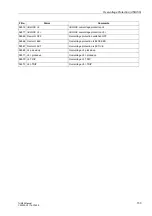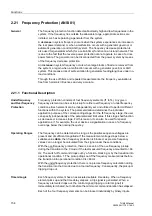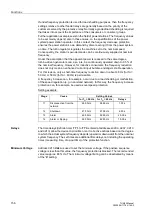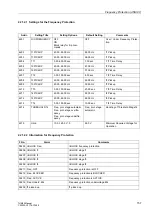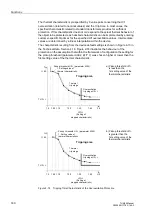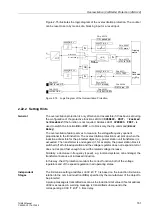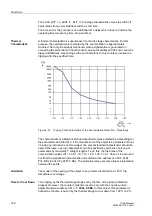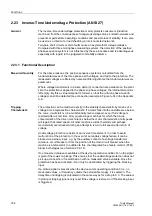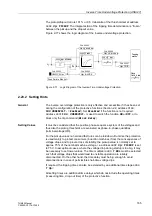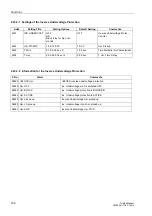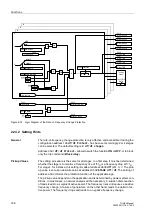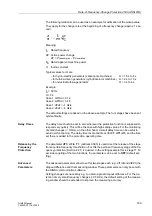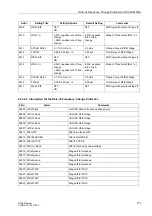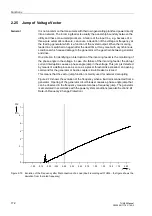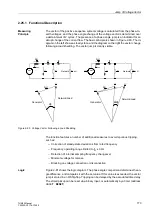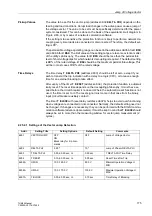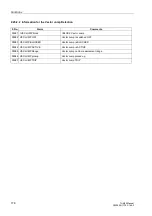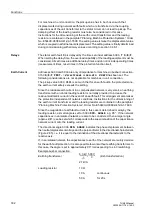
Rate-of-Frequency-Change Protection df/dt (ANSI 81R)
167
7UM62 Manual
C53000-G1176-C149-3
2.24
Rate-of-Frequency-Change Protection df/dt (ANSI 81R)
General
With the rate-of-frequency-change protection, frequency changes can be quickly de-
tected. This allows a prompt response to frequency dips or frequency rises. A trip com-
mand can be issued even before the pickup threshold of the frequency protection (see
Section 2.21) is reached.
Frequency changes occur, for instance, when there is an unbalance between the pro-
duced and the necessary active power. They call for control measures on one hand
and for switching actions on the other hand. These can be relief measures, such as
network decoupling, or disconnection of loads (load shedding). The sooner these
measures are taken after a malfunction appears, the more effective they are.
The two main applications for this protection function is thus network decoupling and
load shedding.
2.24.1 Functional Description
Measuring
Principle
From the positive-sequence voltage, the frequency is determined once per cycle over
a measuring window of 3 cycles, and a mean value of two successive frequency mea-
surements is formed. The frequency difference is then determined over a settable time
interval (default setting 5 cycles). The ratio between frequency difference and time dif-
ference is equivalent to the frequency change; it can be positive or negative. The mea-
surement is performed continuously (per cycle). Monitoring functions such as under-
voltage monitoring, checks for phase angle jumps etc. help to avoid overfunctioning.
Frequency
Increase/ Decrease
The rate-of-frequency-change protection has four stages, from df1/dt to df4/dt. This al-
lows to adapt the function variably to all power system conditions. The stages can be
set to detect either frequency decreases (-df/dt<) or frequency increases (+df/dt>).
The -df/dt stage is only active for frequencies below the rated frequency, or less if the
underfrequency release is activated. Likewise, the df/dt> stage is active for frequen-
cies above the rated frequency, or higher, if the overfrequency release is activated.
The parameter setting decides where a stage will be used.
To avoid a proliferation of setting parameters, the settable measuring window for the
frequency difference formation and the dropout difference are each valid for two stag-
es.
Operating Ranges
The frequency can be determined as long as there is a sufficiently strong positive se-
quence system of voltages. If the measuring voltage drops below a settable value
, the frequency protection is blocked because the signal allows under such con-
ditions no precise calculation of the frequency values.
Time Delays/Logic
Tripping can be delayed by a set time delay associated with each frequency element.
This is recommended for monitoring of small gradients. A trip command is generated
as soon as a time delay has expired. After the pickup has reset, the trip command is
immediately reset as well, but the trip signal is maintained for at least the minimum
command duration.
Each of the four frequency change stages can be blocked individually by binary input.
The undervoltage blocking acts on all stages simultaneously.
Figure 2-78 shows the logic diagram.

